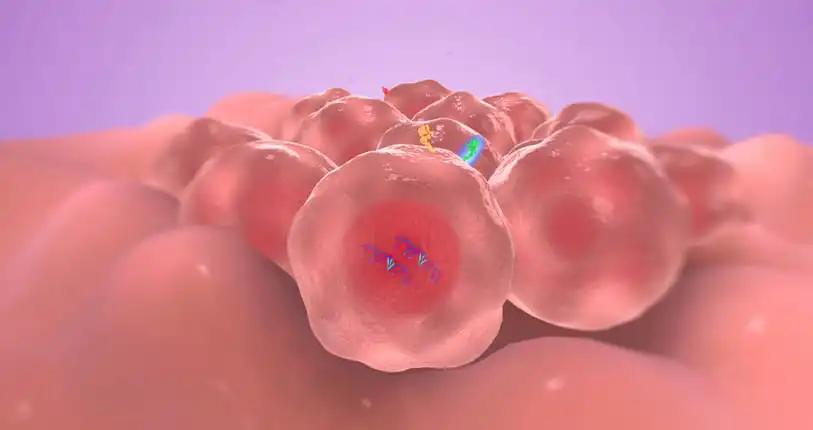KEY TAKEAWAYS
- The phase 2 study aimed to evaluate rates of ctDNA detection before, during, and after adjuvant CAPE.
- Residual disease post NAT, receiving adjuvant CAPE (+/- pembrolizumab), enrolled in ctDNA monitoring studies. ctDNA following standard therapy is linked to RFS.
- eTNBC patients with prior ctDNA-positive status showed no ctDNA clearance with CAPE treatment, linking to worse RFS.
Two separate, prospective circulating tumor DNA (ctDNA) monitoring studies were conducted on patients (pts) with residual disease after neoadjuvant therapy (NAT) who received adjuvant capecitabine (CAPE) for 6 months (+/- pembrolizumab). Plasma samples for ctDNA detection (SignateraTM, bespoke mPCR-NGS assay) were collected before, during, and after CAPE. The chi-square test assessed the relationship between ctDNA detection and residual cancer burden (RCB) scores and the pathologic stage. The correlation of ctDNA status with outcomes was evaluated through the log-rank test.
The reported median follow-up was 19.3 months (range 10.7 to 43.7), and 29 patients aged between 33 and 78 (median age of 43) were included in the trials. RCB scores after NAT were presented for 26 pts (I:10, II:12, III:4). Patients with RCB III and pN3 experienced a higher positivity rate of ctDNA during CAPE (p-values of 0.0082 and 0.0072, respectively). ctDNA detection was present in 15% (3/20) of patients before beginning CAPE, but this increased to 25% (7/28) after treatment.
CAPE treatment did not result in ctDNA clearance for any pts. Out of the 7 ctDNA-positive patients, 86% (6) experienced clinical relapse after CAPE with a median of 3.85 months (range: 0.6-11). Patients who tested positive for ctDNA had a significantly lower RFS rate than those who tested negative (14% vs ctDNA-negative: 100%; p=0.0001). The overall survival rate was 97%, with only one patient who had tested positive for ctDNA passing away 13 months before receiving CAPE.
CAPE treatment did not eliminate ctDNA in eTNBC patients who were ctDNA-positive before receiving CAPE. ctDNA-positive status was linked to poor RFS in this high-risk group. ctDNA presence during CAPE therapy may help as a biomarker to identify eligible candidates for new agents in adjuvant trials.
Clinical Trial: https://classic.clinicaltrials.gov/ct2/show/NCT04768426
Gupta, T., Garcia, C., Biederman, S., Kalashnikova, E., Rodriguez, A.A., Liu, M.C., Keenan, J., Medford, A.J., Isakoff, S., Bardia, A., Telli, M.L., Ho, A.Y. Annals of Oncology (2023) 8 (1suppl_4): 101219-101219. 10.1016/esmoop/esmoop101219



